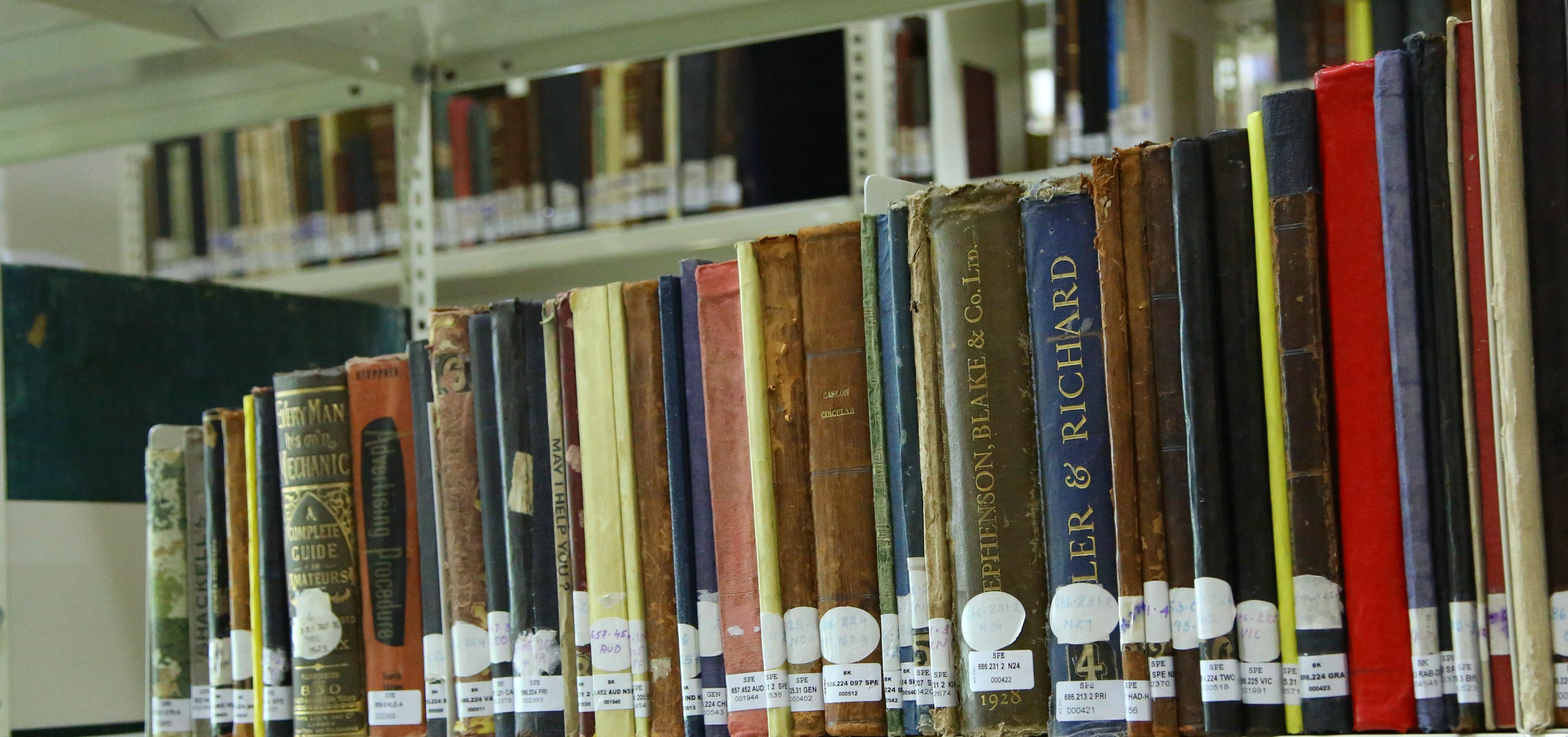Development of the Archives
The renovation work of the Archives got started from the last week of November 2015 and got completed by the December 2016. One of the important steps in this process was the development of the infrastructure so as to suit the needs of the preservation process. It involved partition of the hall into Archives proper, Reference Section and Work Area (with fumigation chamber). The flooring and the ceiling were completely redone. The wooden shelves were replaced with around twenty steel shelves. In order to control the humidity inside the Archives, it was necessary to set up Air conditioning. The complete re-wiring was taken up with all new electrical fittings and fire alarm system. The Digitization Process necessitated the setting of new scanners for the same purpose. The Reference Area with computer systems will be available to the Researchers so as to make use of the digital versions of all the scanned copies of the manuscripts.
Conservation Process
Cleaning and Fumigation
 Cleaning of all documents, records and books (manuscripts and printed) was done with soft brush to remove both dust and insects which was the primary step of conservation. Once the records were cleaned, they were kept in the fumigation chamber for two weeks using a chemical named ‘Para-Dichlorobenzene’.
Cleaning of all documents, records and books (manuscripts and printed) was done with soft brush to remove both dust and insects which was the primary step of conservation. Once the records were cleaned, they were kept in the fumigation chamber for two weeks using a chemical named ‘Para-Dichlorobenzene’.
Lamination with Japanese Tissue paper
Single sheet documents, letters, damaged manuscripts and printed books were laminated using imported Japanese tissue paper. Single sheet documents, letters and damaged manuscripts laminated with Japanese tissue are to be fixed on acid-free (neutralized) handmade paper. Records both laminated and non-laminated were then wrapped in the acid-free handmade paper either as bundles or as files.
.jpg)
Preservation
Archivists and conservators recommend wrapping the records and documents that are fumigated and cleaned with acid-free (neutralised) hand-made papers. Such wrapping can protect the fragile and old records by providing additional security.  It can protect the records from dust and dirt, too. According to present western archival concepts, all records other than bound volumes should be placed in some form of secondary enclosure that give protection from dust, dirt and insects and make transportation safe. It can also help even out fluctuations in temperature and humidity causing damage to records and climate for the growth of insects. Therefore, records in the category of letters and paper documents were wrapped in acid-free papers were in the boxes, definitely maintaining archival quality.
It can protect the records from dust and dirt, too. According to present western archival concepts, all records other than bound volumes should be placed in some form of secondary enclosure that give protection from dust, dirt and insects and make transportation safe. It can also help even out fluctuations in temperature and humidity causing damage to records and climate for the growth of insects. Therefore, records in the category of letters and paper documents were wrapped in acid-free papers were in the boxes, definitely maintaining archival quality.
Digitization
The existence of any Archive becomes meaningful when it is available for maximum use. In the present situation, digitization is one of the best methods of making the archival material available to the users. Digitization was taken up by scanning of the important documents and manuscripts belonging to the period up to 1947 AD. All manuscripts were already digitized and digital copy is available in the Archives. All digitized materials are made available for reference.
In the present situation, digitization is one of the best methods of making the archival material available to the users. Digitization was taken up by scanning of the important documents and manuscripts belonging to the period up to 1947 AD. All manuscripts were already digitized and digital copy is available in the Archives. All digitized materials are made available for reference.
Cataloguing
 Re-cataloguing and re-arranging of the records and documents as well as manuscripts and library books were needed. Cataloguing could be done either subject wise or title wise. Segregation in chronological order was also taken up.
Re-cataloguing and re-arranging of the records and documents as well as manuscripts and library books were needed. Cataloguing could be done either subject wise or title wise. Segregation in chronological order was also taken up.
Physical Arrangements
Documents, Manuscripts and Printed Books are kept in open steel racks. Documents and Manuscripts are segregated language wise (Syriac, English, Latin, Malayalam, etc.).  Early printed versions or books are segregated language wise (Syriac, Latin, Malayalam, English, Tamil, etc.). Early printed Magazines are also to be segregated language wise. Palm leaves are treated with chemicals and kept in boxes made of acid free paper.
Early printed versions or books are segregated language wise (Syriac, Latin, Malayalam, English, Tamil, etc.). Early printed Magazines are also to be segregated language wise. Palm leaves are treated with chemicals and kept in boxes made of acid free paper.